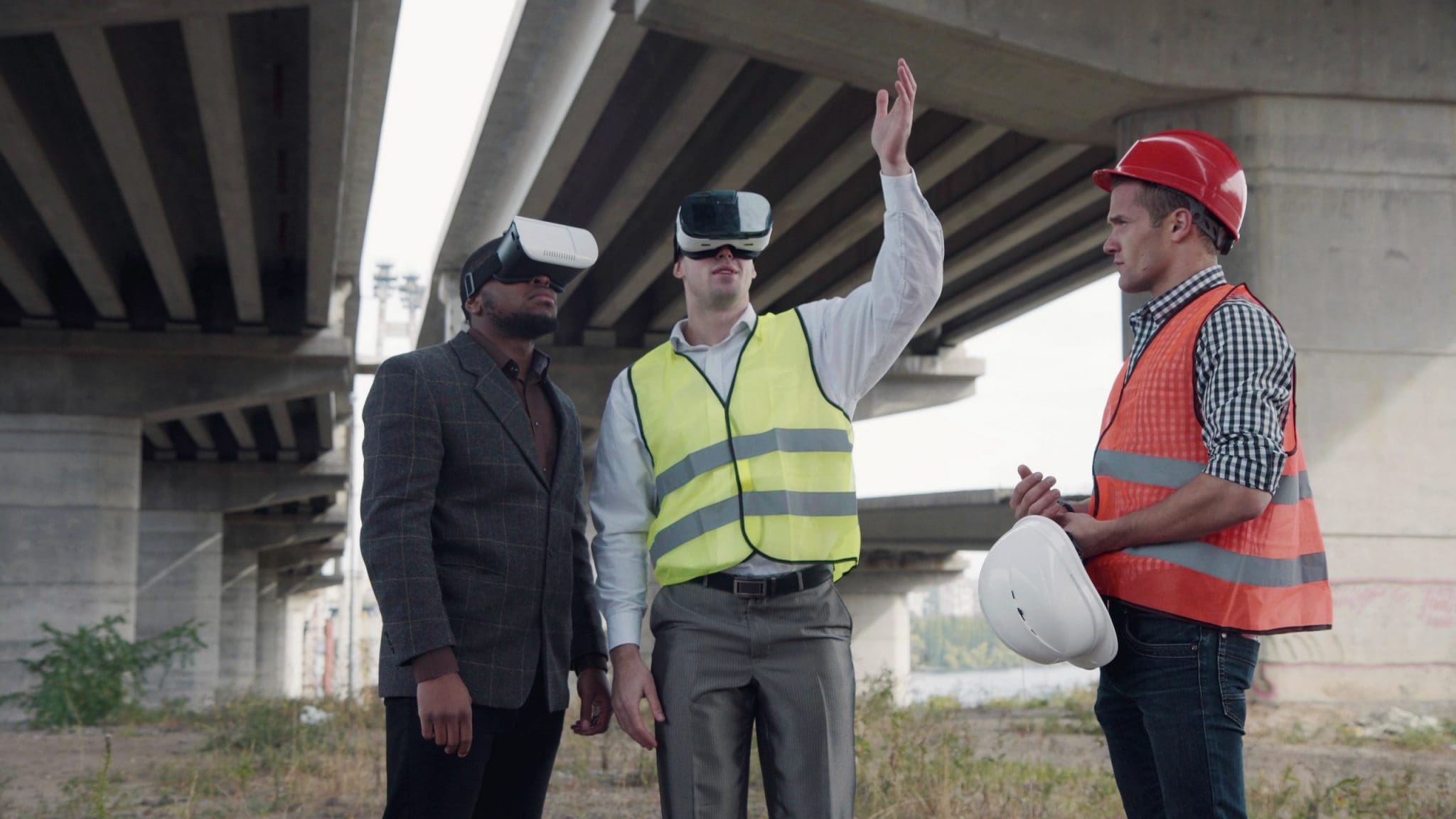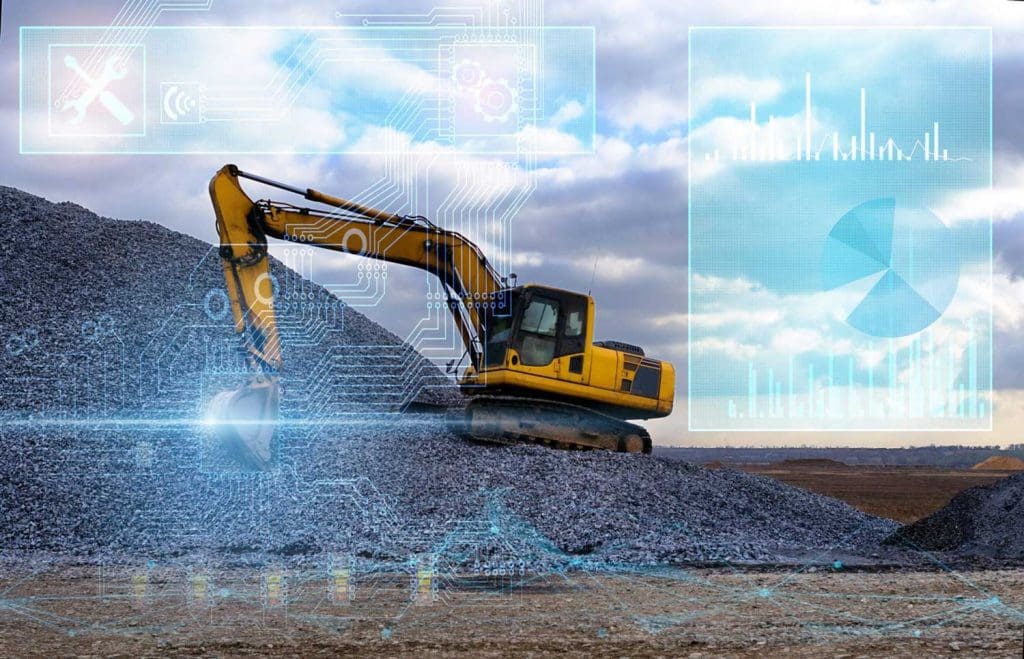If you’ve played a video game lately, you know how realistic it can be. And if you’ve ever worn a virtual reality headset—well, you think you’re right there in the midst of it all. Virtual reality safety training for construction workers has arrived—and it’s keeping workers safe. Keep in mind that one in five work-related deaths are in the construction industry, according to OSHA. If virtual reality training can reduce construction fatalities, that’s good news.
Virtual reality (VR) is a combination of hardware and software technology that replaces the real physical environment, allowing users to interact in simulated situations. It goes well beyond gaming, but it’s a similar concept. Many construction companies are adopting VR technology and using it as a safer training environment for their workers.
In a training situation, VR can be set up to simulate an actual workplace location or situation. It can not only create a realistic scenario, but it can also take into account emotions, sensations and distractions that could be common and contribute to accidents.
Construction is a dangerous business. Think about it. Workers balancing on scaffolding—sometimes in inclement weather. Heavy equipment moving earth and carrying heavy loads that could injure workers and onlookers. Cranes reaching high levels of partially constructed buildings that can miss their mark or cause a worker to fall. VR safety training can help by safely putting workers in all types of dangerous situations—virtually—and showing them where potential issues lie.
Safety training for construction workers in the past required companies to replicate buildings and the surrounding environment. They were very big and costly—and came with the same dangers to workers as in the real world. It also spelled potential danger for the trainers because they had to be in the same location as the workers.
Virtual reality changed all that by creating training programs with zero harm to workers. Here are some of the benefits:
• It can safely provide riskier, yet more realistic training. VR basically pushes training to the limit. It can show building structures at normal heights in realistic situations with a 360-degree image, swing simulated loads, inject potential distractions and offer role playing. It can simulate actual hazards and show what happens if workers watch out for them (or don’t) and introduce realistic feelings of stress without the real danger.
• Practice makes perfect. The old way of safety training didn’t allow for much practice because each worker had to wait his or her turn; additional practice would be too costly. In VR, a worker just straps on the headset and interacts. He can practice until he gets it right.
• VR can bring randomness into training. In real life, you never know what the weather will be or what possible distraction could affect your work. Virtual reality can program all kinds of random moments and put them into the training. With traditional training, it’s too expensive to plan for all of the possible variables, so you have a tendency to limit the possibilities. Remember when you were in school and you’d ask the teacher, “Will we have to know that for the test?” It’s like that. However, the randomness of VR avoids “teaching to the test.”
• It offers a safe environment for testing and evaluating. A VR program can be customized to the job site or project, constructing scenarios that workers would likely face. That makes it easier to realistically test and evaluate results.
• Trainees are more focused with immersive VR training. Since VR completely replicates the physical world, users have to focus at all times. Even if they are waiting until it’s their turn for a headset, they can watch in higher precision detail on an HD screen while their co-workers are training. That actually helps them actively learn, even while they’re passively waiting.
• VR helps trainers do their job. It puts them in the best position to evaluate their students because they see the same dangers from the same vantage point as opposed to an observation point that is often obscured with traditional training. Additionally, the software can collect and analyze data from each training session.
• It’s more cost-effective and relevant. The program, customizable to the company and/or job site, shows unique challenges workers could face, making it more efficient. Moreover, because it’s programmed into a headset or headsets, workers can repeat the training as needed. That saves time and money.
• It helps workers retain information. Traditional training may be a one-time shot. People may not pay attention as they should, so they don’t retain what they’ve learned. What good is that? VR, on the other hand, offers training that is consistent, frequent, relevant and immersive.
Virtual reality is becoming accessible to more people—especially those who are used to the concept in video gaming. In the heavy equipment industry, VR will likely offer equipment simulators so students can experience the feel and resistance of heavy equipment. In the virtual classroom, students will be able to learn from their mistakes as they have multiple opportunities to practice their skills and boost efficiency. Perhaps most importantly, they can learn safely and without the risks of damage to equipment and injury to the operator.
Enroll in heavy equipment training programs at HEC (Heavy Equipment Colleges of America). Programs are offered in Fayetteville NC, Conyers GA, Clarksville TN, Oklahoma City OK and San Bernardino CA. In addition, training through the Army’s Career Skills Program (CSP) is offered at Ft. Irwin CA and Lakewood WA.

